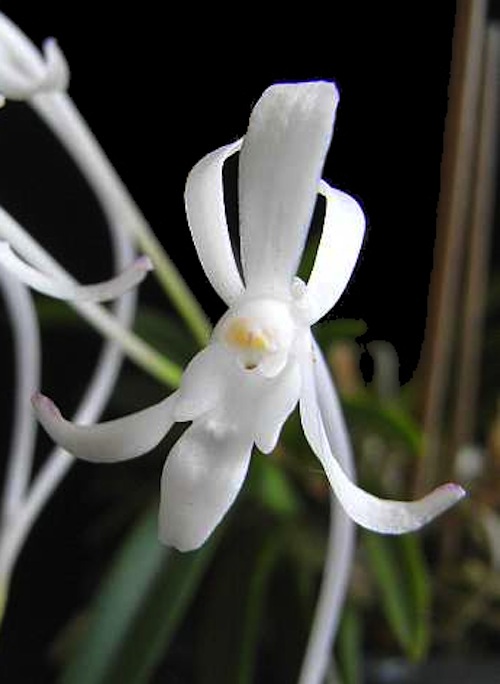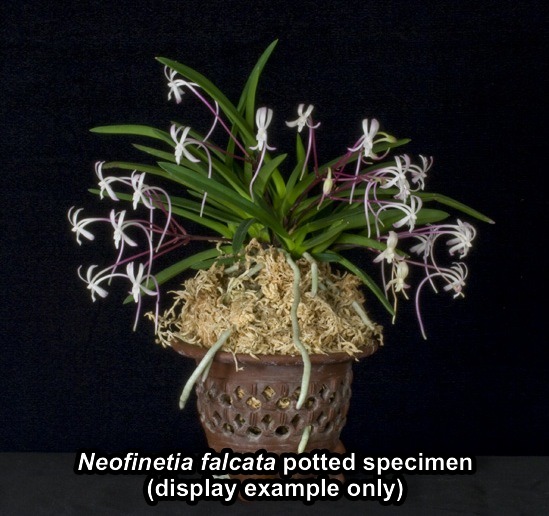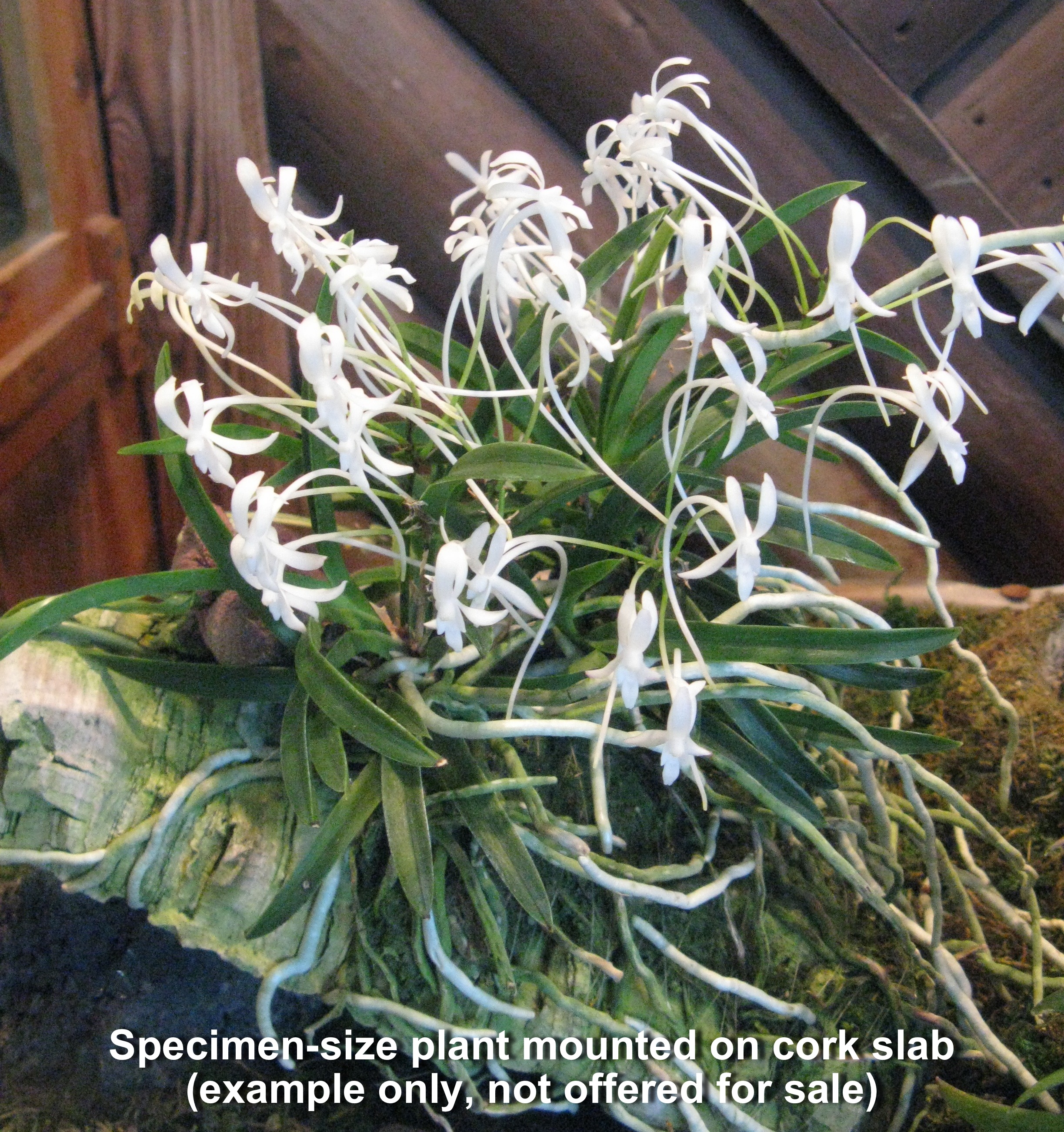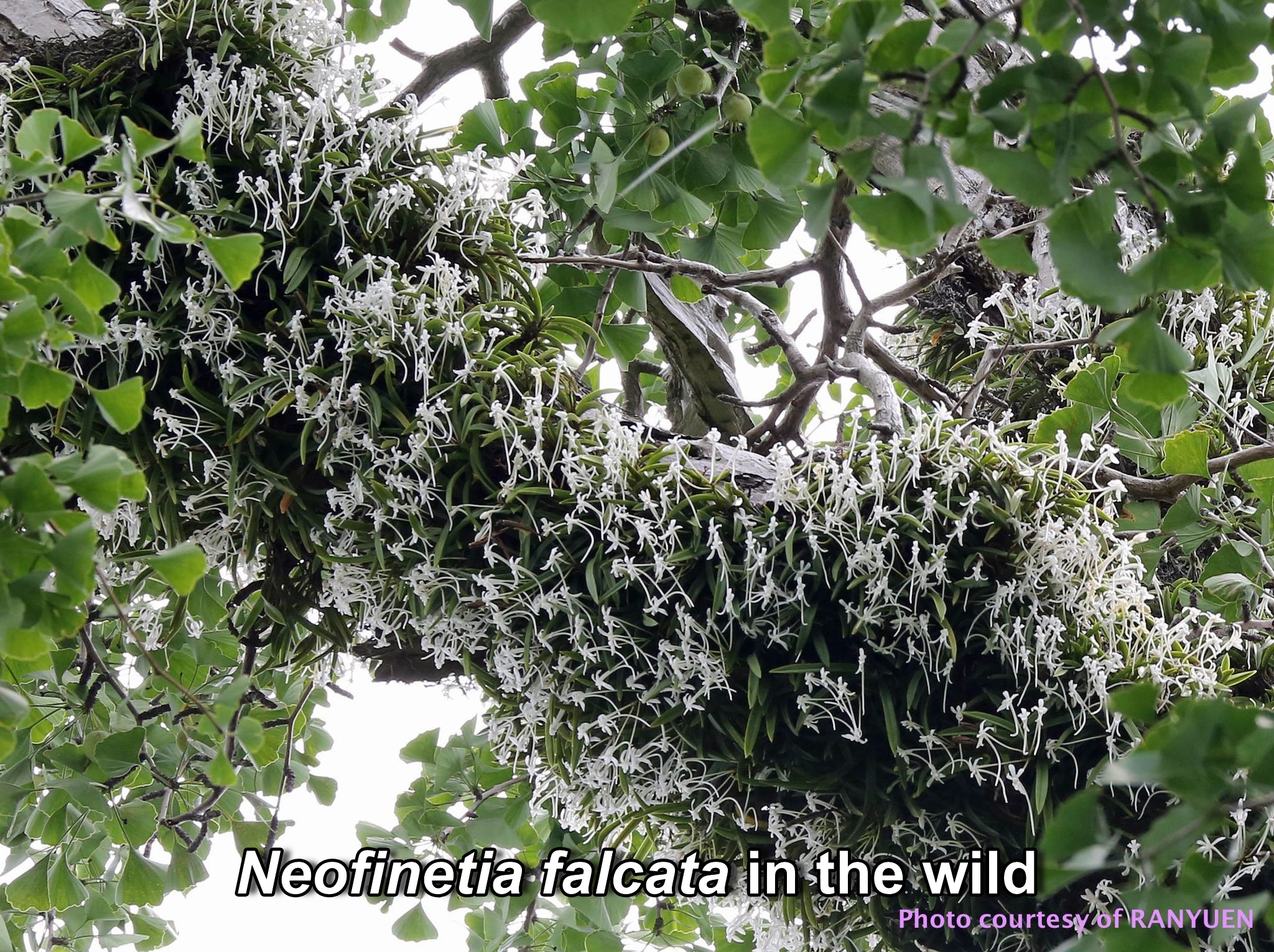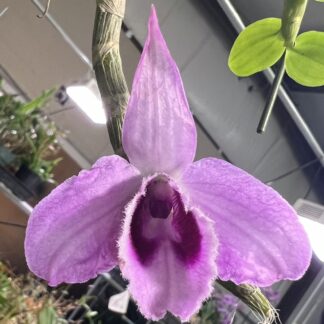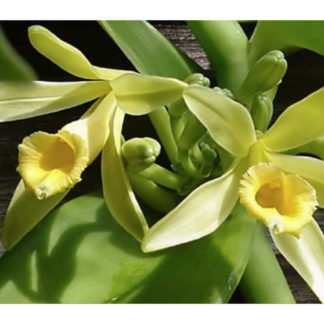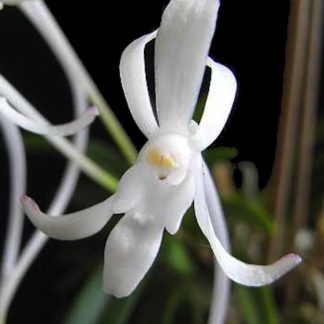Description
Neofinetia falcata is one of the most distinctive species of orchid on earth. It comes from China, Korea, and the most orchid-obsessed country of all, Japan.
Neofinetia falcata is also known as the “Samurai Orchid” because samurai warriors would cultivate the plant — something they did in addition to composing poetry, writing calligraphy, drinking with their buddies, and training for war. And you thought samurai only went around fighting ninjas… Orchid growing certainly attracts all kinds of people!
At one point in Japan, only the upper class was permitted to grow this orchid. I suppose any commoners caught cultivating these would suffer some very severe punishment, if shows like James Clavell’s “Shogun” were accurate. I still remember watching the mini-series on TV as a kid, and watching the horror on Anjin-san’s (played by Richard Chamberlain) face when a samurai lopped off the head of a poor peasant for some minor infraction having to do with a fish. I can only imagine what real samurai would do to someone growing an illicit orchid!
It is fitting that this orchid commands such respect in Japan, as its long, flowing petals resemble a long kimono robe. In Japan, rare forms of Neofinetia falcata command stratospheric prices, well over $10,000 USD in some cases! They are grown to perfection in fancy pots that are themselves very valuable. And they only grow them in high quality long-fiber New Zealand Sphagnum moss (you can purchase some at the link!).
In the old days in Japan, some samurai swords were so prized that you had to use special paper to cover your nose and mouth while admiring them, so as to avoid breathing on these deadly weapons, and as a sign of great respect. Guess what? You’d have to do the exact same thing when admiring a Neofinetia orchid on display!
Despite all the pomp and circumstance surrounding this orchid in Japan, we live in different times now. No harm will come to you or your samurai orchid should you breathe on it.
Neofinetia falcata is very easy to grow and bloom. We prefer to grow it in sphagnum moss, as that’s what the Japanese pros do, but I have also grown them quite nicely in coarse fir bark. In nature, they grow attached to trees (see pic), which means they can be mounted on cork or other wood as well. The aerial roots like to spread out, and good aeration will promote robust root growth, so avoid keeping roots overly wet. As for light, they seem to do well in bright light conditions, although shady conditions are just fine, too.
Excellent features of Neofinetias:
1) It’s petite. You can grow a whole collection on a windowsill.
2) It’s VERY fragrant when in bloom.
3) It’s easy to grow — just let the water drain through the media.
4) It can bloom 2X per year (at mature size).
5) It can have two flower spikes open at once.
6) It is an excellent showpiece in the home, and looks very nice even when not in bloom.
7) You can pretend to be a samurai, as there is no more samurai-obsessed culture than American culture, what with all the movies and shows featuring these warriors of Japanese antiquity.
This plant does well in intermediate to warm conditions, but can handle a cold spell (into the 30s F) just fine.
